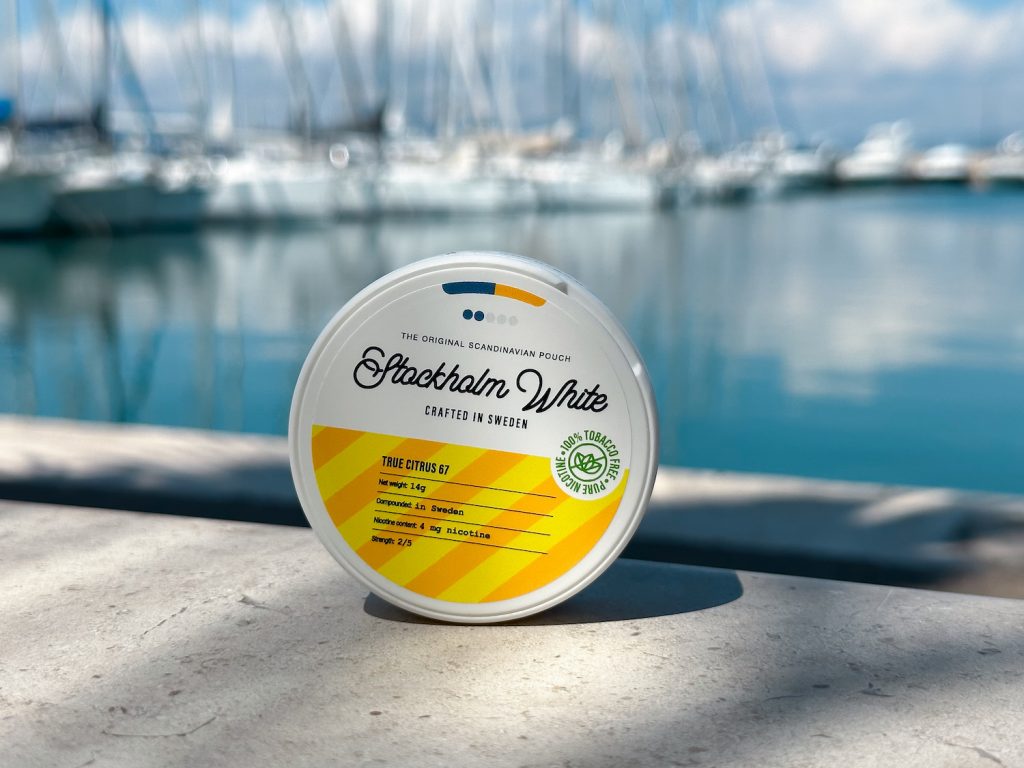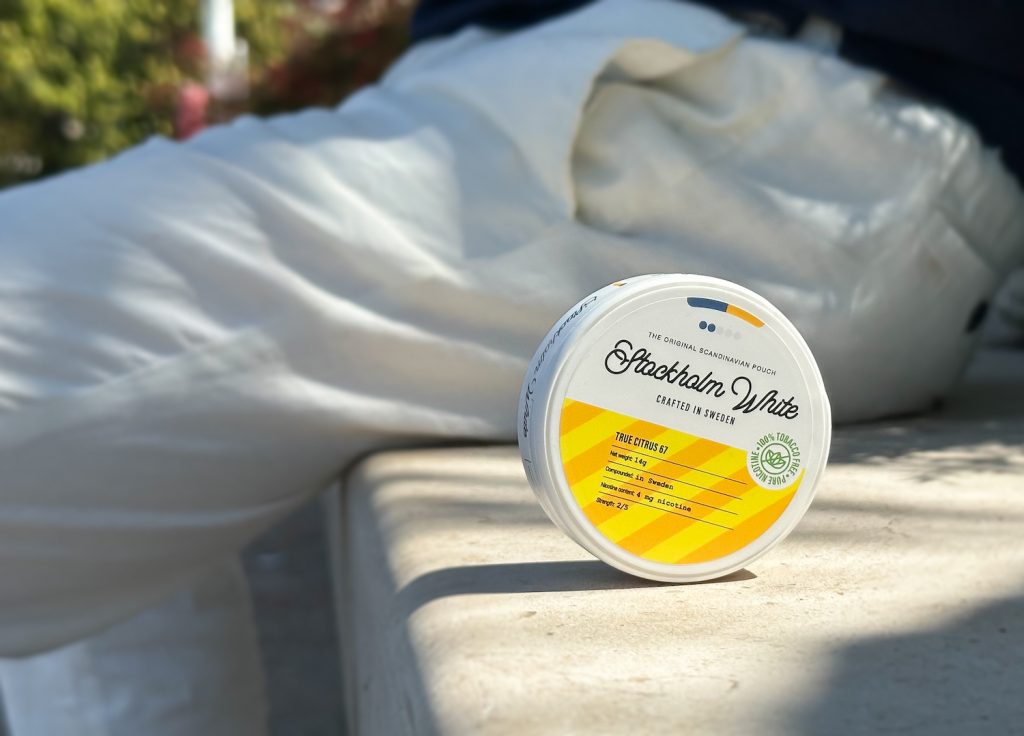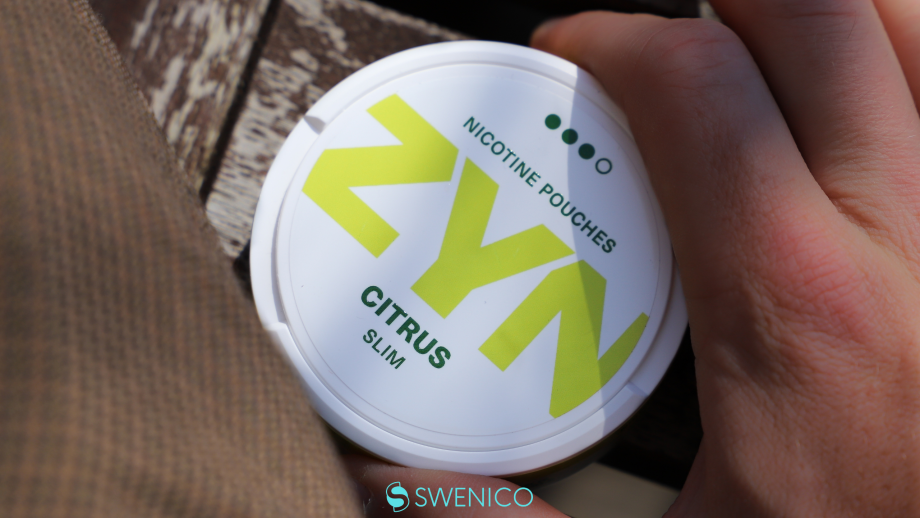Nicotine pouches are a relatively new product on the market that has existed for around a decade. Whilst nicotine pouches were first released in the early 2010s, more and more people have just discovered this novel nicotine product. Nicotine pouches are a product development of Swedish tobacco snus that has been used in Sweden for centuries but unlike snus, nicotine pouches are free from tobacco.
Still, since nicotine pouches are a nicotine product and since many people are unfamiliar with the product’s characteristics, a question that is sometimes asked is whether nicotine pouches are considered tobacco. This is the question we’re taking a closer look at in this article.
Are nicotine pouches considered tobacco?
The short answer to this question is no, nicotine pouches are not considered tobacco (in most jurisdictions). There are, however, some jurisdictions that classify nicotine pouches as tobacco products, although they do not contain any tobacco.
Just like caffeine products that use caffeine extracted from the coffee bean are not classified as ”coffee”, nicotine pouches that use nicotine extracted from the tobacco plant are not considered ”tobacco”.
So how can nicotine pouches be classified as tobacco even if they do not contain tobacco? Well, the short answer is that many countries’ tobacco laws are outdated and not up to date with recent product developments on the market (as is often the case with many other things). This is the reason why many countries have updated their laws to also include novel nicotine products like vapes and nicotine pouches, and clarify the rules.
However, most countries have not updated their laws related to novel nicotine products, which is why nicotine pouches sometimes find themselves in legal limbo and do not fit into the current descriptions and wordings of the law. Due to the gaps in the laws, nicotine pouches may therefore be included in an old tobacco regulation until a new law that properly encompasses nicotine pouches (and other novel nicotine products) is put in place.
Now, to fully grasp the question, let’s sort out what nicotine pouches are and why they may sometimes find themselves in a legal gray area. First and foremost, nicotine pouches are very different from traditional tobacco products for two main reasons: they do not contain tobacco and they are not combustible.
And even though the only similarity between traditional tobacco products and nicotine pouches is the fact that they contain nicotine, lumping them together is, in our opinon, a bit unfair.
Nicotine pouches are predominantly made of plant fiber, nicotine, flavoring, sweetener, and other food-grade ingredients. Nicotine pouches are placed under the lip where they release nicotine into the bloodstream and are not combustible, which is a huge difference.
Most (in our opinon) sensible countries have the approach that a product needs to contain tobacco leaves to be classified as a tobacco product. Since nicotine pouches do not contain tobacco leaves, they do not fall under the category of being a tobacco product in these jurisdictions.
However, some countries have a different approach and rather look at the derivation of the nicotine in the product. This brings us to the next point.
The source of nicotine in nicotine pouches
Some other novel nicotine products, in particular vapes, predominantly use synthetic nicotine, however, since the drip from nicotine pouches is usually swallowed, manufacturers generally found that synthetic nicotine is too harsh for the throat and doesn’t offer an equally pleasant experience as tobacco-derived nicotine.
As a result, almost all nicotine pouches today use tobacco-derived nicotine and not synthetic nicotine. That said, just because the nicotine is derived from tobacco doesn’t mean that nicotine pouches contain tobacco. Because nicotine in pure form is just a component of the tobacco plant.
However, it still serves as an explanation that some countries regard nicotine pouches as tobacco products, despite not objectively and factually being that.

Regulatory Landscape
Traditionally, tobacco regulations have focused on products like cigarettes, cigars, and smokeless tobacco. The introduction of nicotine pouches challenges these regulatory norms and has, as mentioned, prompted a reevaluation of how existing rules apply to this relatively novel product. For example, Sweden introduced a new law in 2023 to specifically clarify the regulations around nicotine pouches and other tobacco-free nicotine pouches. Prior to this, they were in a gray area which means that there were essentially no regulations and in theory no age restriction to purchase them. It’s very likely that we will see more countries in the near future update their laws to also encompass novel nicotine products like nicotine pouches.
Some regulatory bodies classify them as tobacco products due to their nicotine content, while others argue that the absence of tobacco leaf should warrant a different classification. It’s safe to say that the lack of a standardized approach across jurisdictions has contributed to confusion but has also underscored the need for a more cohesive and comprehensive regulatory framework.
As the regulatory landscape evolves, health authorities worldwide engage in discussions and debates concerning nicotine pouches. Different stakeholders bring diverse perspectives, weighing in on public health concerns, potential benefits, and the implications for tobacco control efforts. In the European Union in particular, there is a collaborative effort among health authorities to establish a unified stance on the classification and regulation of nicotine pouches.

Nicotine Addiction Potential
While nicotine pouches offer an alternative to traditional tobacco and are without a doubt less harmful to smoking, they obviously contain nicotine which does have some impact on us humans. Most importantly, nicotine is addictive which is something that health authorities need to take a stance on.
While nicotine pouches eliminate the harmful effects of tobacco combustion, questions also remain about the overall health impact of prolonged nicotine exposure. Whilst the health effects primarily relates to temporarily increased blood pressure, further studies need to be conducted to fully understand the health effects of nicotine pouches. But as already stated, it’s safe to say that they are a much less harmful alternative than smoking.
Are nicotine pouches considered tobacco products for insurance?
In general, premiums tend to go up if you use tobacco. This is because tobacco products are considered high-risk factors for life insurance providers. However, in the United States, nicotine pouches are not classified as tobacco.
For that reason, nicotine pouches are generally not considered tobacco products for insurance. With that said, different insurers may have different policies which means that the rules may vary. In addition, it’s important to highlight the fact that because nicotine pouches are a relatively new product, most people have a poor understanding of what they are and how they work.
This is why some may just see that it contains nicotine and lump it together with “tobacco products” without actually having read the science and understood its limited risks. In addition, because many people simply associate nicotine with smoking, they may just assume that you are a smoker. This is why you may need to communicate with your insurance provider to explain the product you are using and explain that it is
Due to the huge difference in health impact between nicotine pouches and smoking, it’s not reasonable to lump them together but this may happen due to ignorance and limited understanding of what nicotine pouches are.
For example, The University of Texas Systems explains that “Nicotine replacement products like gum and patches are not considered tobacco products for purposes of the Tobacco Premium Program.”






